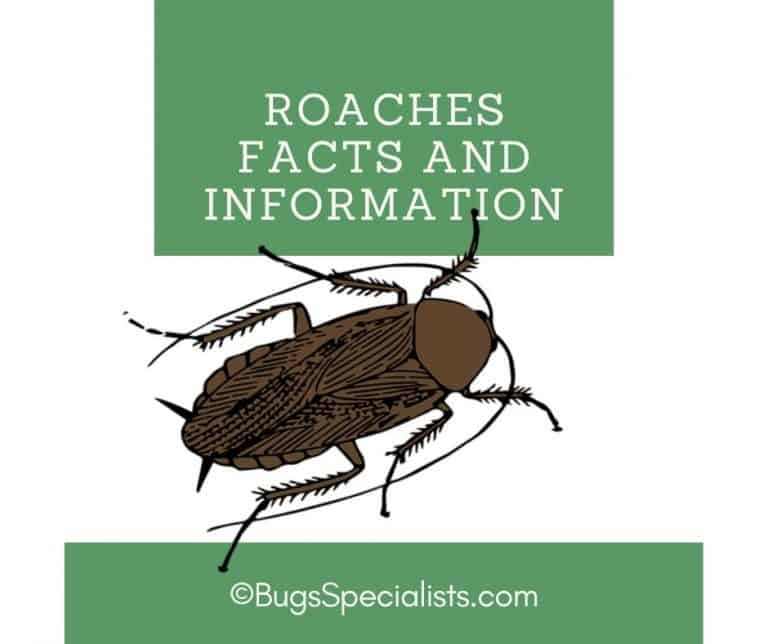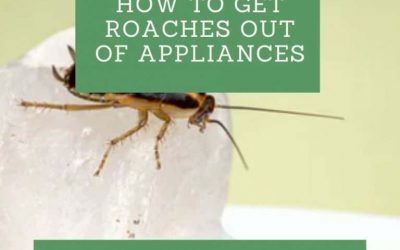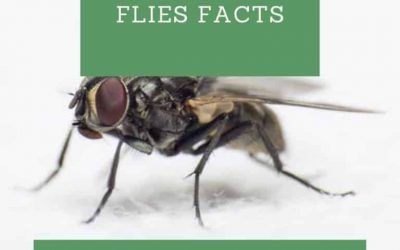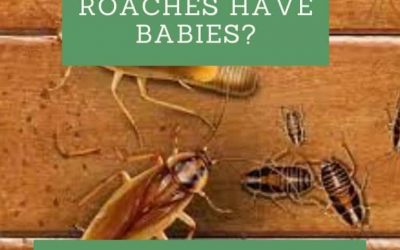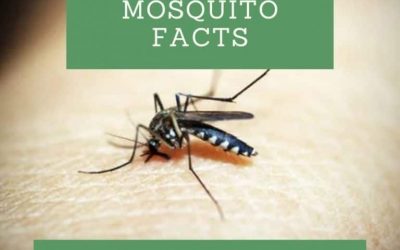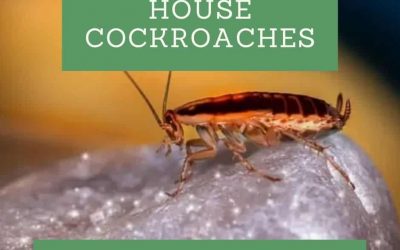This phenomenon explains their tough and resilient nature to survive even the harshest of conditions. Who knows, maybe they are the only creatures that may survive an apocalypse or even a nuclear attack.
They may have a notable history, but humans will always find them nauseating insects that carry pathogenic microorganisms known to spread severe illnesses. Cockroaches are not at all fun.
They may be the oldest insects to live alongside humans, but their sight in your apartment will always give you chills.
Roaches Facts and Information
They are among the most studied insects globally, and there is plenty of information from researches and biological studies enough to exhaust your brain.
Below are some facts about cockroaches you might want to check out.
Cockroaches can live without the head
You may have heard this statement a couple of times but never believed it. Well, cockroaches can actually survive without the head for a month before they die of starvation.
The decapitated head, on the other hand, can stay alive for an hour or two. Intriguing, right? Well, there is more. While in that state, the roach can actually move around and even respond to stimuli.
Cockroaches can live without food for 30 days
And you wonder how they managed to outlive dinosaurs. It is pretty fascinating how they can go for about a month without having a meal of any kind.
However, they can only survive for a week without water; that’s why they thrive in humid conditions or areas with high moisture content.
Related reading: What Smell Repels Cockroaches?
Female roaches can only mate once
Imagine a creature that can stay pregnant for life. It sounds impossible, but it is very possible and quite common in the roach world.
The female needs to only mate once and will continue to produce eggs that hatch to little roaches throughout its entire life. When the male deposits its sperm, the female can store it for as long as it lives.
Cockroaches are fast
When you startle into a cockroach, it will never stand there and wait for you to hit it. In fact, it takes off so fast you’d think it was not there in the first place.
Three miles per hour is pretty impressive for an insect that rarely flies. Suppose it was an Olympic between humans and roaches. I bet some humans may never come close to winning.
Related reading:Why Do Cockroaches Come Out at Night
Cockroaches spread diseases
Running three miles per hour across your kitchen, onto your utensils and cooking area may mesmerize you, but roaches are not the cleanest insects out here.
They carry bacteria, viruses, and some parasites that can cause severe illnesses such as cholera, typhoid, and E.coli. You don’t really want to suffer from these diseases.
Related reading: Diseases Caused By Cockroaches
Roaches Life Cycle
Unlike most insects, roaches undergo incomplete metamorphosis. Their life cycle revolves around three developmental stages of egg, nymph, and adult.
Understanding the cockroach life cycle plays a huge role, especially if you are dealing with an infestation.
Cockroach Life Cycle Stages
Below we discuss the three crucial stages of a roach’s life cycle.
Egg
The egg is the initial stage in the life cycle of a cockroach. Most lay about 50 eggs contained in leathery capsules called the oothecae.
It is only on rare occasions that certain species of roaches give birth to live young ones.
The roach sticks on surfaces such as ceiling walls, furniture, and inside electronic devices. Depending on species and climate, the eggs can take up to 100 days before they hatch.
Usually, they would take less than 15 days. Female roaches can lay up to 300 eggs in a year.
Nymph
When the eggs hatch, little white roaches with soft bodies emerge. Shortly after, they turn to brown or grey. During the nymphal phase of the roach cycle, they molt at least four times.
As they develop, roaches in the nymphal stage can be as distractive as adult roaches. A complete nymphal phase lasts anywhere between 1-3 months.
Adult
The adult phase marks the final stage in the life cycle of a cockroach. It is during this stage that roaches mate and proceed to create new ones.
A mark for the end of a cycle marks the beginning of a new cycle and a new generation of cockroaches.
Cockroach Population Growth Rate
It is no secret cockroaches multiply so fast. In a moment, you see just a few roaches moving around your house. After a few days, there is a whole lot of them, and before you know it, you are dealing with an infestation. Crazy right? It makes you wonder, how do they multiply so fast? The rate is outstanding, but there is an explanation behind the numbers.
Take the case of German cockroaches. This species is known to multiply so fast given optimal conditions: a classical representation of most roach species. The females can lay about 35 eggs four times in their entire lifetime. Within six weeks, they are usually mature, and the young females proceed to lay eggs that hatch to nymphs.
This means a new generation of adult roaches from a single cockroach every six weeks. Given that an adult roach produces about 35 eggs each time, 35 adult roaches capable of having at least 35 eggs each exist after every six weeks.
The multiplication happens throughout the year, where hundreds of roaches are brought into existence every day. Such is an infestation you’d want to call a professional exterminator.
Whenever you spot even a single cockroach, take immediate action because, after a short while, the one could bring about thousands.
Related reading: How to keep roaches away while you sleep
Lifespan of Cockroaches
The lifespan of cockroaches varies from one species to another. Factors such as temperature and availability of food and water also determine how long a roach lives.
The American cockroach is one of the species known to live for a considerably long time. Given optimum conditions, this species can live for as long as one year.
It is not the same for other species such as the German and the Oriental cockroach. The lifespan of an average German roach is about 300 days from the moment the egg hatches.
Oriental roach lives for a considerably more extended period than the German. Its developmental process takes about 600 days and spends about 180 days for its adult life for females and 160 for the male.
When is Cockroach Mating Season?
There are hundreds of millions of cockroaches available globally, and this number is never going to reduces anytime soon. However, the distribution and availability of these insects are not always the same throughout the year.
During the year, you may realize that there are so many roaches available, and other times, the number drastically reduces.
Factors such as temperature and availability of food affect the prevalence and distribution of cockroaches. These insects are pretty intelligent.
They can sense the air’s humidity level and seem to love it when the temperatures are warmer and steamy. During the summer, you may happen to see a lot of cockroaches because they love the warm steamy temperatures.
Cockroach eggs take quite a short time to hatch during the summer compared to other seasons. That explains why you are likely to see more roaches during summer than any other months.
However, cockroaches mate all year round and lay eggs in all seasons. It’s only in summer that the process is faster; that is why most people think it is the mating season for roaches.
Related reading: I Saw One Cockroach, Should I be Worried?
How do Cockroaches Give Birth
It may surprise you to learn that some cockroach species do give birth to live young ones. And this is not about the oothecae hanging out from the abdomen moments before the cockroaches hatch.
No, this is actually about the roach completing the gestation period and giving birth to live nymphs.
Usually, a roach is oviparous, which means that nymphs develop outside of her body in leather-like capsules known as the oothecae. Most people assume to have found a pregnant cockroach when the oothecae stick out from the abdomen.
It carries this egg capsule until it is ready to hatch and then pushes it out somewhere safe.
Some roach species are ovoviviparous, which means that the leathery capsules develop inside the body rather than stick outside. In contrast, other species are viviparous, which means that the young ones develop inside the mother and survive inside a fluid just like mammals do.
When the gestation period is due, the viviparous and ovoviviparous give birth to live young ones.
Related reading: How to Find a Roach Nest
Do Cockroaches Lay Eggs When Killed?
The ability of a cockroach to lay eggs when killed depends on how the death happened. Most insects, including roaches, have a peripheral nervous system.
The respiratory system is also decentralized, meaning that the cockroach can survive for a few days without the head. The control of nerves, blood flow, and supply of oxygen is not controlled by the head.
It means that the roach can continue to perform other body functions, including laying eggs even without the head. But it also depends on how close the cockroach was to lay eggs.
If the eggs were fully developed and not damaged when killing the roach, they could hatch even if the cockroach is dead.
Suppose the eggs did not fully develop, then the roach will just die without laying the eggs. So yes, cockroaches can lay eggs, and the eggs can proceed to hatch given that they were full-term and not damaged at all.
Related reading: How does Borax kill Roaches?
How do Cockroaches Reproduce?
Reproduction in cockroaches is not as complex as it seems. Understanding the process can save you from an infestation because they reproduce pretty rapidly.
After mating and copulation, the female lays fertilized eggs which hatch after a few weeks to produce nymphs. On average, a female cockroach can lay up to 300 eggs in a lifetime.
The nymphs grow up and molt four times. After the fourth molting, they are young adults ready to mate and produce more cockroaches. If this happens in your house, you could be dealing with an infestation in a short while. Female cockroaches can reproduce for months without the need of a male.
Scientists recently discovered that some insects, including cockroaches, can actually reproduce through asexual reproduction through a process called pathogeneses which means that nymphs can actually be hatched from unfertilized eggs. However, there is a catch to this reproduction method; the roaches can only hatch female progeny for about three years.
Where do Cockroaches Breed?
Cockroaches are known to thrive in filth and other nasty conditions. But that’s not always the case because these insects can actually breed in clean environments.
Whenever you spot a cockroach in your house, it is a sign that there could be more in hiding, an indication of a potential infestation.
You must take such an occurrence seriously because the critters are known to spread diseases, some of which could be fatal. In most cases, cockroaches breed in warm areas that have high moisture content.
Such places include outdoor drains, foundations, under kitchen sinks, and cracks and crevices in your walls.
How Roaches Mate
The mating process in cockroaches is not so different from that of other insects. It begins with the female releasing a chemical compound known as pheromones which attract the male even when it is far away.
Before the female releases these chemicals, it goes into the calling position. This position is whereby the female raises its wings to expose its integral membranes.
The position allows the female to expand its genital chambers and then release the pheromones that attract the males. In most species, the males also produce pheromones to attract the females. A male who receives the signal proceeds to where the female roach is, raises its wings to show interest, and then turns its rear towards the female.
Once in position, the female roach then crawls onto the male’s back, and copulation happens. The male cockroach deposits sperms in a sac called the spermatophore. Copulation can take up to 90 minutes, which explains why male roaches require more carbohydrates in their diet.
Related reading: Why do flying cockroaches fly towards you?
How fast do Cockroaches Reproduce?
Having a roach infestation can change how we live. Every time you will have scares of getting an infection transmitted by these critters. They multiply so fast, and without taking action, they can quickly turn your crib into a nightmare.
To effectively deal with roaches, you also need to understand how fast they reproduce. Trust me, you don’t want to deal with a case of severe infestation.
After about one week of mating, the female produces an ootheca containing somewhere between 20 to 40 eggs. The number of eggs may vary from one species to another. After about a month, the eggs hatch, releasing into the world live nymphs. The little roaches undergo four molting stages, and within a year or less, they are full-grown adults ready to reproduce.
The time frame varies in different species, with some taking as short as six weeks to lay new egg batches. Most roaches release an ootheca every week for about ten months. That’s quite a lot of cockroaches.
How Long Does a Cockroach Live?
Each roach species has its estimated number of days it can live. However, on average, a roach can live for up to one year.
The American cockroach can live for one year given optimum conditions, while the oriental can survive for about 600 days from the day it hatched. On the other hand, the German cockroach can beat the odds and live for over 700 days.
Compared to other insects, cockroaches live for quite a long time, but factors such as temperature and food availability significantly affect their life span. Pet roaches live for considerably long periods, probably because they have all the optimal conditions given to them by their human owner.
How Long Can a Cockroach Live Without Food?
Cockroaches have a unique characteristic to live for as long as one month without any food source. They are basically survivors. You lock them in a room without food for a few weeks hoping they die, but when you come back, the critters are moving up and down. Not dead at all.
Even if you cut their heads off to remove the mouth, these damning creatures will live for 30 days before they bid you bye-bye. This phenomenon explains that cockroaches have several nervous systems and practically don’t require their heads to survive.
In fact, if it so happened that roaches without heads find another means to ingest food, they could live for as long as other roaches.
Related reading: Wood roaches vs german roaches
How Long Can Cockroaches Live Without Air?
Humans, animals, and insects all require oxygen for survival. An average human being cannot survive without oxygen for more than six minutes. Even if they do, they may suffer severe brain damages.
Cockroaches are pretty different. Research has shown that they can survive for about 45 minutes without oxygen.
Like most insects, roaches breathe through tiny pores on the surface of their bodies. When in areas with little to no oxygen, cockroaches hold their breath to prevent water loss from their bodies.
They can do so for more than 40 minutes and won’t get the slightest bit of brain damage because their respiratory system has no relationship with the head where the brain is located.
Related reading: How to get rid of roaches using essential oils
How Long Can Cockroaches Live Underwater?
Often you will find roaches breeding near water sources. They love water. It is practically essential for their day-to-day activities and keeping them moist. Also, it is an integral part of their diet. But for how long can a roach survive when its whole body is submerged in water?
Note that all living creatures require oxygen for their survival, and cockroaches are not an exception. Research has shown that they can survive for about 40 minutes without oxygen. And as we all know, it is impossible to breathe underwater because of a lack of oxygen. When submerged in water, a roach can hold its breath for 30 minutes before it dies.
The water temperature also determines how long roaches can survive. For instance, if the water is warm, they happen to die faster, unlike when the water is cold. The main reason they hold their breath is to prevent the loss of water from their bodies.
Can Cockroaches Survive Being Flushed Down the Toilet?
Unless you are using highly toxic chemicals known to kill roaches, flashing your toilet with plain water in an attempt to kill cockroaches won’t work. They simply won’t die. After they reach the point where the water drains, they will walk up as if nothing happened.
It is not disrespect, you wanted them dead, but they survived. That’s just how these damning creatures are built. What actually happens is that roaches can actually hold their breaths for about 40 minutes in an attempt to regulate water loss from their bodies.
They have pretty tough exoskeletons that can withstand the pressure from the water. Even as they flow down the drain, they tend to hit the wall pipes, and of course, the landing is usually a crash.
But roaches somehow emerge at the end of the drain as if they were just having a simple water bath.
Related reading: How to Stop Cockroaches from Coming up the Drain
Do Cockroaches Eat Ants?
You may wonder how roaches managed to survive over 290 million years and even outlived dinosaurs. It may come as a surprise to some people, but the secret to their survival could be their diet. Similar to most insects, cockroaches feed on plants and animal matter.
When they are not sleeping, the critters are usually busy trying to find something to eat. They are opportunists, and when they come across other insects that happen to move slowly, they won’t waste a second. Cockroaches are known to eat certain insects, such as bedbugs.
Some species eat live insects while others prefer dead ones. Cockroaches are known to eat dead ants, but there is no evidence suggesting they could eat living ants. However, expect anything from these critters because their feeding habit is one in a million.
Related reading: What are cockroaches afraid of?
Do Cockroaches Eat Clothes?
Cockroaches are known to eat just about anything. They chew on plastic, food waste, cables, and even dead insects.
But can the critters feast on your clothes? Well, roaches don’t particularly have a feel for the taste of fabric. However, if you happen to leave food stains on your clothes, cockroaches may make a meal out of them.
While eating the food stuck on clothes, they may poke small holes on the piece of fabric and even stains of their own, maybe to remind you that they were there but not really; they were just scavenging for food.
On rare occasions, such as where there is ultimately no food for them to eat, roaches may feed on clothes. However, they won’t go for artificial fabric such as polyester but rather all-natural fabric like cotton and burlap.
Related reading: How to get rid of bugs that eat clothes
Do Cockroaches Drink Water?
Yes. Cockroaches drink water. It is an essential part of the diet for most living creatures, and the critters are not excluded.
In fact, they spend a lot of time around water sources such as drainpipes and even have their colonies built around these zones. However, cockroaches are tough creatures and can survive without water for about one week.
When they sense they have been poisoned, cockroaches drink a lot of water, in most cases, the poison doesn’t work, and they go about living their life. That’s why it is crucial that whenever fighting an infestation, you should eliminate any water sources.
Related reading: How to get rid of roach infestation
Can Cockroaches Live Without a Head?
In humans and other animal species, the head is the most critical body organ since it carries the brain, which, as we all know, is part of the nervous system and controls all body functions. But that is not the case with cockroaches.
Like most insects, cockroaches have an open circulatory system. They breathe through tiny pores on their bodies’ surface, which means they don’t require heads for oxygen intake.
The ganglia in their body substitute the brain functionality. They are also cold-blooded animals, so they do not need much for their survival. Yes, cockroaches can actually live without the head for about a month.
Related reading: Why do cockroaches die on their back?
How do Cockroaches Survive?
It is astonishing how roaches managed to outlive dinosaurs and other ancient creatures we only hear stories of. How do they even survive the famines, hunger, and other challenging conditions?
It may beat you to understand, but something we all know is that roaches are pretty tough creatures.
First of all, they are cold-blooded animals and can go for a long while without the essential sustenance commodities such as food and water. They won’t just drop dead due to starvation. Roaches are scavengers and survive on an omnivorous diet, which means they eat about anything; plant or animal matter.
They thrive in warmer temperatures with high humidity levels. Their eggs take a shorter period to hatch in such conditions, and the nymphs develop much faster.
Related reading: Best bug bombs for roaches
How Common are Cockroaches?
There are about 4600 species of cockroaches available globally. About 30 of these species are common around human beings, while the rest prefer to live in the wild. Those that live around humans have adapted to their surroundings and multiply quite fast. For more on this , types of house cockroaches article is recommended.
They are pretty ingenious insects and can eat, breed, and even live in your house without you noticing. According to AAFA research, about 63 percent of homes in the United States have cockroaches or at least traces of their presence, such as saliva, body parts, and droppings.
That is a high number considering it is well past half the population.
Interesting Facts About Cockroaches
A lot of research has been done about cockroaches. There is a lot of information from these studies, some of which are intriguing. The fact that they live alongside humans makes scientists want to study them even more. Below are some enthralling facts about roaches you should check out.
- Some cockroach species produce milk for their young ones. Recent studies suggest that this milk contains all the necessary nutrients required for a balanced diet. Some companies have initiated a move to mass-produce cockroach milk for human consumption. For more on this read, benefits of eating cockroaches.
- Cockroaches leave chemical trails in their droppings for others of the same species to follow, especially when looking for food. That’s why they always find each other and always in a swarm.
- History suggests that some roach species have lived alongside humans for a very long time and have adapted to the surroundings and conditions that humans provide.
- Female cockroaches can stay pregnant throughout their life. They may only need to mate once, and the moment the male deposits its sperms, it won’t be needed ever again. Read more on how roaches have babies here.
- Cockroaches are tough creatures and can survive without food for over a month. Some species are said to even go for as long as three months. Some can survive a week without water while others up to a month.
4 Faq on cockroaches
Can Cockroaches Smell Food?
Yes. The one thing known to draw cockroaches into your household is the smell of food.
Initially, it was thought that roaches never used their sense of smell to detect food, but recent studies suggest otherwise.
They use their antennae to track food sources. The smell they tend to be most attracted to emanate from starch, grease, cheese, and rotting kitchen waste.
Can Cockroaches Survive a Nuclear Blast?
This creepy crawlies are resilient in nature and may survive just about anything. It is a common myth that roaches can survive a nuclear blast and the subsequent radiation from the nuclear waste.
Although they are fifteen times more impervious than humans, cockroaches may still not survive a nuclear explosion.
The radiation destroys their DNA sequence, and more exposure leads to diseases such as cancer. It kills cells making it quite difficult for any living organism to survive.
The more complex an organism is, the more likely it is to be affected by the aftermath of a nuclear explosion. Therefore, humans are likely to suffer more than roaches would.
Do Cockroaches Eat Poop?
Cockroaches find feces from other animals and even human beings to be very nutritious. Their diet is composed of about anything edible; therefore, poop meal is not any different.
They will eat it whenever they find it. However, cockroaches are pretty close to humans, and feces may contain harmful pathogens that cause diseases whenever ingested.
What Does Roach Poop Look Like?
It is easy to differentiate roach poop from that of rodents and other household pests. Cockroach poop looks like ground coffee berries or black pepper, especially when they are young or just tiny in nature.
For larger species, the droppings appear tubular and darker with rounded ends. Spotting roach poop is usually the first evidence of a possible infestation.
Also read: My apartment has roaches can I break my lease
Bottom Line
For a long time, cockroaches have lived alongside humans but have never made friends with them. It could be because they are distractive in nature or that humans find them disgusting. They are known to spread diseases, some of which may be fatal if not treated.
Cockroaches are tough insects. They have existed for a long time, and researchers have studied them because of their closeness to humans. The critters may be nauseating but have some of the most interesting facts. One that beats them all is that they can survive for over a month without the head.
Related reading: Research

